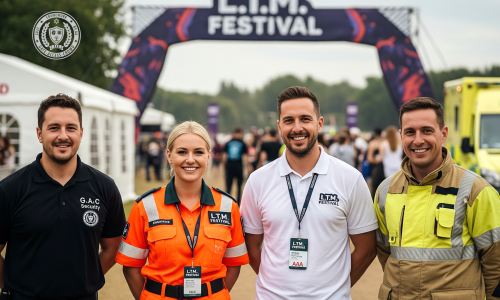Event Marketing as a Narrative Strategy: An Exhaustive Examination of Audience, Channels, and Timing
- ariya
- alireza ariya, ARIYA PRODUCTION, article, dj ariya, EVENT, event digital marketing, event director, event directors, event expertise, EVENT MARKETING, event marketing 2026, event marketing afairs, event marketing experts, event marketing strategy, event marketing tips, event specialist, senior event management
- 0 Comments
Event Marketing as a Narrative Strategy
An Exhaustive Examination of Audience, Channels, and Timing
Written by Alireza Ariya | Senior Event Director and Event Marketing Strategist
Inception
Event marketing has evolved from a simple logistical necessity to a strategic discipline that incorporates behavioral science, media expertise, and experiential design. The emphasis is no longer on simply conveying information but on creating a narrative that resonates with the right audience, using the most effective medium, at an optimal time.
In this paper, the elements of event marketing are explored from a descriptive viewpoint, highlighting audience perception, channel choice, behavior timing, and the role of data in strategic decision-making.
By drawing upon existing research in experiential marketing, digital environments, and data analysis, this review presents a holistic framework for understanding how events are marketed, experienced, and remembered.
Comprehending the Audience: Transitioning from Segmentation to Sentiment
Effective event marketing begins with an in-depth understanding of the audience that includes not just demographic considerations but also motivations, timing, and cultural context.
Whereas age, gender, income, and location offer a structural starting point, they fail to account for why a person decides to go to a specific event. As Emma Wood contends in her research "Event Marketing: Measuring an Experience", the abstract quality of event experiences means that audience analysis must be more interpretive in nature.
An audience's behavior is determined by timing, relevance, and perceived value. A person's interest in a festival, for example, depends on when they are invited, how well the invitation fits their priorities at the time, and how well it fits their sense of identity.
Interests are fluid and often are determined by adjacent themes such as sustainability, design, or cultural affiliation. Recognizing these nuances allows marketers to promote events as not just a means of entertainment but a key element of personal stories.
Channels of Communication: Medium as Message
With the audience in mind, the second strategic choice is to choose appropriate communication channels. These are not neutral vehicles—they establish the tone, rhythm, and acceptance of the message. As Florian Neus illustrates in his book "Event Marketing in the Context of Higher Education Marketing and Digital Environments", every platform has its own behavioral logic and cultural expectations.
Instagram exists at the intersection of discovery and design. It is a platform that prefers visual storytelling and emotional immediacy, which makes it well suited to events that are based on atmosphere and aesthetic appeal. Email provides depth and accuracy, enabling personalized communication at decision points. Facebook gives us infrastructure and scale, serving as both a promotional venue and a transactional platform. Twitter provides speed and amplification, making it especially useful for real-time updates and sponsor activation.
LinkedIn presents special opportunities for business-to-business and community-focused events. Its professional audience consumes content in a different way, looking for relevance and authority. Since event promotion on LinkedIn is still not that common, competition for eyes is minimal, and organic postings can gain significant traction.
Influencer marketing builds trust based on associative relationships. By partnering with those who have credibility among desired communities, marketers tap into established networks of loyalty. When executed authentically, influencer promotions are viewed as endorsements instead of simple ads—a distinction that has a profound impact on audience perception.
Case Study: Vita Coco’s Valentine’s Day DIY Vending Machine Activation
In 2025, Vita Coco took a refreshingly authentic approach to event marketing by installing a makeshift “vending machine” in Washington Square Park, New York City, on Valentine’s Day. Rather than staging an elaborate influencer campaign, the brand offered free samples of its Strawberries & Crème Treats to passersby via a utility cart dressed in pink fabric, all for a mere $25 setup—constructed using office materials inc.com, skysociety.co, netinfluencer.com.
This activation exemplifies the core narrative strategy: It transcended traditional audience segmentation, reaching beyond influencers to create a shared, communal experience. It made channel choice strategic, turning public space into a stage for genuine interaction rather than curated content. The timing—Valentine’s Day—strategically heightened emotional resonance and memorability. The narrative was simple but powerful: “No frills, just connection.” The stunt generated long lines, viral content (TikTok views reaching millions), and widespread praise for its authenticity and community.
Timing and Behavior: The Psychology of Purchase
Timing isn't a logistical detail—it's a psychological trigger. Most campaigns run on set calendars, but audience behavior doesn't usually fit into such predictability. Urgency and social validation are two of the most powerful triggers for last-minute ticket buying, research in the Journal of Applied Management and Business reveals.
A campaign that is launched too soon may be forgotten; one that is launched too late might miss its opportunity for impact. The trick is to know when the audience is most receptive and to tailor messages to the moment. Not just for first contact, either, but for reminders, follow-ups, and after-event connection as well. Behavioral data—click-throughs, open timing, purchase windows—can inform these choices with growing accuracy.
Data as Strategic Compass: Accuracy, Insight, and Adaptation
Data isn't a byproduct in today's world—it's the guide. According to Sonali Nair, writing in her Forbes Council piece "Unleashing the Power of Data Analytics in Marketing and Events", data analytics enables event planners to shift from gut feeling to fact-based strategy.
The ability to collect, measure, and react to data profoundly changes the methods used in event design and marketing, from attendee preferences to engagement metrics. Real-time feedback mechanisms, such as interactive apps and live polls, enable organizers to make changes on the fly. Post-event surveys, combined with social media sentiment analyses, yield qualitative feedback that complements quantitative metrics. The integration of these sources of data creates a feedback loop that informs future planning, enhances personalization, and supports brand loyalty.
But using data also requires responsibility. Accuracy, privacy, and ethical treatment are not extras—they are fundamental. As highlighted in the Event Espresso framework "How to Use Event Data and Analytics to Improve Events", data needs to be handled not merely as numbers, but as stories that represent human experience.
Non-Digital Methods: Complementary Reach
Although digital channels rule the strategic universe, older methods—radio, print, sponsorships, and word of mouth—are still relevant. Their virtue is reach, not accuracy. They tend to reach audiences that digital instruments might miss, especially in local or culturally targeted situations. They are not as measurable or flexible as online campaigns, though. The majority of event organizers spend 70% to 90% of budgets on digital instruments, but in some situations, traditional media can serve as a complement.
Conclusion
Event marketing is a multilayered discipline that needs more than tactical implementation—it requires interpretive intelligence, strategic timing, and ethical use of data.
Knowing the audience, choosing the appropriate channels, aligning with behavioral cadences, and building long-term relationships are not discrete tasks; they are interdependent layers of an integrated strategy. In a world where attention is precious and expectations are high, the capacity to deliver a compelling narrative—through the proper medium, at the proper moment, to the proper individual—is what elevates an event from a planned activity to a rich experience.
The topic, structure, and core analysis of this article were fully conceived and authored by the writer. AI tools were employed purely as supportive instruments for language enhancement, clarity, and refinement. All editorial choices, interpretations, and decisions remain the sole responsibility of the author.
Summary
- Event marketing = storytelling, not just logistics or promotion
- Audience analysis must go beyond demographics → focus on motivation, timing, identity
- Emma Wood’s research: event experiences are abstract → need interpretive audience insights
- Channel selection matters → each platform shapes tone and behavior
- Instagram = visual + emotional
- Email = personalized + precise
- Facebook = scalable + transactional
- Twitter = fast + amplifying
- LinkedIn = professional + underused
- Influencers = trust via association
- Timing is psychological, not just calendar-based
- Urgency + social proof = last-minute ticket drivers
- Behavioral data (clicks, opens, purchase windows) = guide for message timing
- Data = strategic compass, not a side product
- Enables real-time adaptation, personalization, and post-event feedback
- Ethical use of data is essential → accuracy, privacy, human context
- Non-digital methods (radio, print, word-of-mouth) still useful for local/cultural reach
- Conclusion:
- Success = right story, right person, right moment
- Strategy must integrate audience, channel, timing, and data as interdependent layers
Author: Alireza Ariya — Senior Event Director & Event Marketing Strategist. All rights reserved. AI tools used solely for language refinement and formatting. No part of this article may be reproduced without explicit permission.
Published: August 2025
Next Steps for Readers
- Subscribe for future essays on experiential strategy and cultural brand development
- Explore case studies from past festivals and cross-border entertainment campaigns
- Connect with Alireza Ariya on LinkedIn for collaboration or consultation

Related Posts

- admin
- September 4, 2025
GAC Framework : Gate Ops, Access Control and Crowd Safety
Overview of the G.A.C Framework The G.A.C Framework, developed by Alireza Ariya, a seasoned eve ..
- admin
- September 10, 2025
ارسالی جدید از GAC – CONTACT FORM
NAME Ariya Production EMAIL ADDRESS ad@ariyaproduction.com COMPANY/ORGANIZATION ARIYA PRODÜKSI ..



